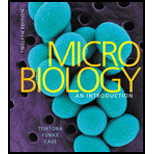
Concept explainers
Case summary:
A 23-year-old woman has her first prenatal examination. She is 4 1/4 months pregnant. Her VDRL results showed negative. The woman returns to her physician complaining of a labial lesion of a few days' duration. A biopsy is negative for malignancy, and herpes test results shows negative. The woman returns to her physician because the labial lesion continues to cause some discomfort. The baby's father has multiple penile lesions and a generalized body rash. The woman delivers her baby. Her RPR is 32, and the infant's is 128. The woman takes her infant to a pediatrician because the baby is lethargic. She has been told that the infant is healthy and need not be worried. The baby's father has a persistent body rash and plantar and palmar rashes. The infant becomes acutely ill with pneumonia and is hospitalized. The admitting physician finds the signs of osteochondritis.
Characters of the case
Symptoms: Labial lesion; the father has multiple penile lesions and body rash.
Diagnosis: VDRL negative, no malignancy, herpes test shows negative.
About the disease:
Syphilisis caused byTreponema pallidum. Congenital syphilis can be transmitted to unborn fetus through placenta and affect the mental development and also could lead to death. Antibiotics benzathine penicillin treatment during the first two trimesters can prevent congenital syphilis.
Want to see the full answer?
Check out a sample textbook solution
Chapter 26 Solutions
Microbiology: An Introduction
- Not part of a graded assignment, from a past midtermarrow_forwardNoggin mutation: The mouse, one of the phenotypic consequences of Noggin mutationis mispatterning of the spinal cord, in the posterior region of the mouse embryo, suchthat in the hindlimb region the more ventral fates are lost, and the dorsal Pax3 domain isexpanded. (this experiment is not in the lectures).a. Hypothesis for why: What would be your hypothesis for why the ventral fatesare lost and dorsal fates expanded? Include in your answer the words notochord,BMP, SHH and either (or both of) surface ectoderm or lateral plate mesodermarrow_forwardNot part of a graded assignment, from a past midtermarrow_forward
- Explain in a flowcharts organazing the words down below: genetics Chromosomes Inheritance DNA & Genes Mutations Proteinsarrow_forwardplease helparrow_forwardWhat does the heavy dark line along collecting duct tell us about water reabsorption in this individual at this time? What does the heavy dark line along collecting duct tell us about ADH secretion in this individual at this time?arrow_forward
- Basic Clinical Lab Competencies for Respiratory C...NursingISBN:9781285244662Author:WhitePublisher:Cengage
 Medical Terminology for Health Professions, Spira...Health & NutritionISBN:9781305634350Author:Ann Ehrlich, Carol L. Schroeder, Laura Ehrlich, Katrina A. SchroederPublisher:Cengage LearningHealth Safety And Nutrition F/Young ChildHealth & NutritionISBN:9781305144767Author:MAROTZPublisher:Cengage
Medical Terminology for Health Professions, Spira...Health & NutritionISBN:9781305634350Author:Ann Ehrlich, Carol L. Schroeder, Laura Ehrlich, Katrina A. SchroederPublisher:Cengage LearningHealth Safety And Nutrition F/Young ChildHealth & NutritionISBN:9781305144767Author:MAROTZPublisher:Cengage





